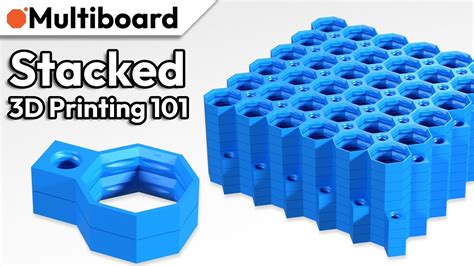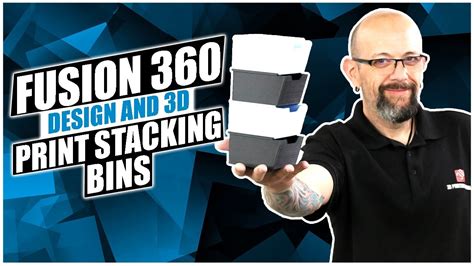are 3d printed electrical boxes safe Using a 3D printer can pose several health concerns. These include potential exposure to ultrafine particles (particles smaller than 100 nanometers) and chemicals, and other possible safety hazards. To .
Categorized under Sheet Metal Specialties, Not Stamped. Our records show it was established in 1981 and incorporated in CA. Current estimates show this company has an annual revenue of 13359744 and employs a staff of approximately 68.
0 · electrical dimer box safety
1 · 3d printing stack boxes
2 · 3d printing stack box safety
Need surplus boxes for your distribution center and don't want to break the bank? Order your used boxes from Leader Box Corp. today!
Which type of filament material(s) is safe to use as an in-wall box for regular, 120v wiring? For instance, an electrical outlet box. In case it matters, location is the state of Washington, USA.I'm not printing outlet safety inserts, just the plate covers. However, worth finding out if there's something I'm not considering, such as off-gasing + small sparks, conductivity, so on. Do not . A printed PLA box is not very safe. There are two main things you want from a plastic box containing mains electronics: If the mains circuit has a fault, and starts a small fire, .As an electrician i can tell you anything you print is not going to be legal. All boxes, fittings, cables, crimps, conduits, connectors, couplings, etc all have a UL listing, and code says you are only .
I'll throw this here to further the conclusion from the post on functionalprint, most places consider insulating thermoplastics to be an electrical hazard. Switch .
Using a 3D printer can pose several health concerns. These include potential exposure to ultrafine particles (particles smaller than 100 nanometers) and chemicals, and other possible safety hazards. To .Electrical hazards in 3D printing are primarily linked to the equipment’s design and operational malfunctions. These risks include electric shocks, short-circuits, and fire hazards due to overheating. The integration of high-voltage power . Quality assurance is essential to confirm that 3D-printed enclosures meet safety, functionality, and durability standards. Without rigorous testing, the product may fail due to component misalignment, poor heat dissipation, or .
3D-printed homes are likely to have a significant effect on the electrical trade in the future, Dubov said. As these homes become more common, electricians and integrators will .
3D printing safety is no minor topic, and there's plenty of ground to cover. Read about how to prevent the worst and protect yourself.Which type of filament material(s) is safe to use as an in-wall box for regular, 120v wiring? For instance, an electrical outlet box. In case it matters, location is the state of Washington, USA. I'm not printing outlet safety inserts, just the plate covers. However, worth finding out if there's something I'm not considering, such as off-gasing + small sparks, conductivity, so on. Do not use PLA for this in any circumstances. It doesn’t have enough heat resistance for electrical enclosures. Also don’t use a flammable plastic like ABS. A printed PLA box is not very safe. There are two main things you want from a plastic box containing mains electronics: If the mains circuit has a fault, and starts a small fire, the case should contain that fire until it burns out, or a fuse goes.
As an electrician i can tell you anything you print is not going to be legal. All boxes, fittings, cables, crimps, conduits, connectors, couplings, etc all have a UL listing, and code says you are only permitted to use UL listed materials in electrical installations. I'll throw this here to further the conclusion from the post on functionalprint, most places consider insulating thermoplastics to be an electrical hazard. Switch plates are made from plastic, but the material is thermoset, which is dissipative or something to that effect. Using a 3D printer can pose several health concerns. These include potential exposure to ultrafine particles (particles smaller than 100 nanometers) and chemicals, and other possible safety hazards. To understand these risks better, NIOSH evaluated emissions from different printer and filament combinations in both laboratory and workplace settings.Electrical hazards in 3D printing are primarily linked to the equipment’s design and operational malfunctions. These risks include electric shocks, short-circuits, and fire hazards due to overheating. The integration of high-voltage power supplies and heated components necessitates stringent safety measures.
Quality assurance is essential to confirm that 3D-printed enclosures meet safety, functionality, and durability standards. Without rigorous testing, the product may fail due to component misalignment, poor heat dissipation, or structural weakness. To test the functionality and durability of a 3D-printed enclosure, follow these best practices:
electrical dimer box safety
3d printing stack boxes


3D-printed homes are likely to have a significant effect on the electrical trade in the future, Dubov said. As these homes become more common, electricians and integrators will need to adapt to working with prefabricated systems and components that are integrated into the home during the printing process.
3D printing safety is no minor topic, and there's plenty of ground to cover. Read about how to prevent the worst and protect yourself.
Which type of filament material(s) is safe to use as an in-wall box for regular, 120v wiring? For instance, an electrical outlet box. In case it matters, location is the state of Washington, USA.
I'm not printing outlet safety inserts, just the plate covers. However, worth finding out if there's something I'm not considering, such as off-gasing + small sparks, conductivity, so on. Do not use PLA for this in any circumstances. It doesn’t have enough heat resistance for electrical enclosures. Also don’t use a flammable plastic like ABS.
A printed PLA box is not very safe. There are two main things you want from a plastic box containing mains electronics: If the mains circuit has a fault, and starts a small fire, the case should contain that fire until it burns out, or a fuse goes. As an electrician i can tell you anything you print is not going to be legal. All boxes, fittings, cables, crimps, conduits, connectors, couplings, etc all have a UL listing, and code says you are only permitted to use UL listed materials in electrical installations. I'll throw this here to further the conclusion from the post on functionalprint, most places consider insulating thermoplastics to be an electrical hazard. Switch plates are made from plastic, but the material is thermoset, which is dissipative or something to that effect. Using a 3D printer can pose several health concerns. These include potential exposure to ultrafine particles (particles smaller than 100 nanometers) and chemicals, and other possible safety hazards. To understand these risks better, NIOSH evaluated emissions from different printer and filament combinations in both laboratory and workplace settings.
Electrical hazards in 3D printing are primarily linked to the equipment’s design and operational malfunctions. These risks include electric shocks, short-circuits, and fire hazards due to overheating. The integration of high-voltage power supplies and heated components necessitates stringent safety measures. Quality assurance is essential to confirm that 3D-printed enclosures meet safety, functionality, and durability standards. Without rigorous testing, the product may fail due to component misalignment, poor heat dissipation, or structural weakness. To test the functionality and durability of a 3D-printed enclosure, follow these best practices:
3D-printed homes are likely to have a significant effect on the electrical trade in the future, Dubov said. As these homes become more common, electricians and integrators will need to adapt to working with prefabricated systems and components that are integrated into the home during the printing process.

3d printing stack box safety
Used CNC specializes in all types of used Haas machinery including used Haas CNC lathes and both horizontal & vertical machining centers.
are 3d printed electrical boxes safe|3d printing stack box safety